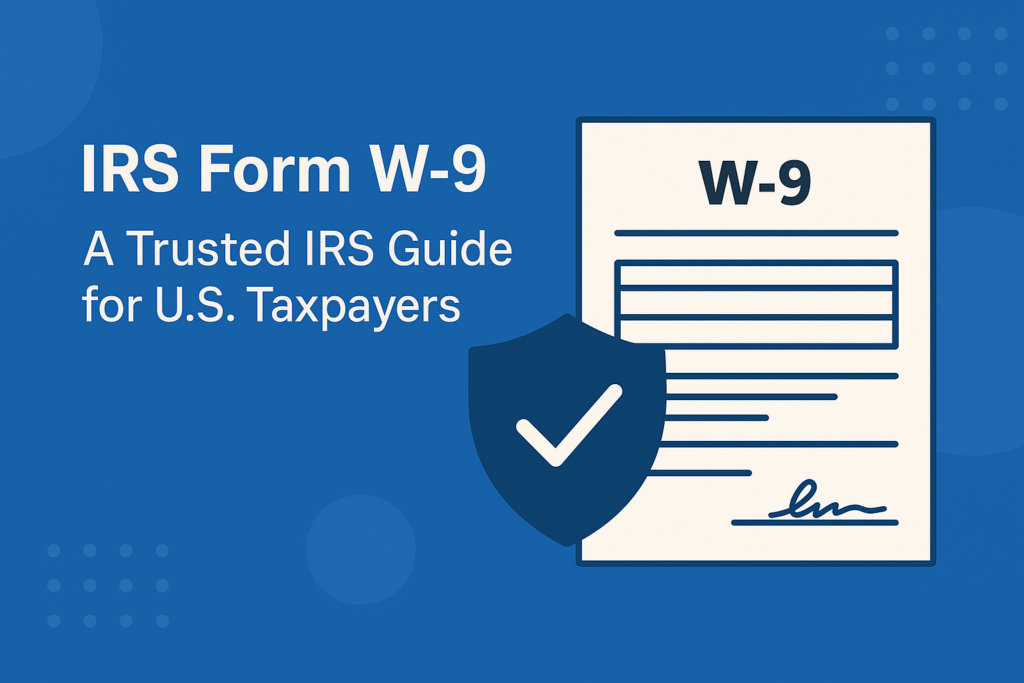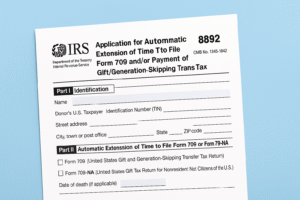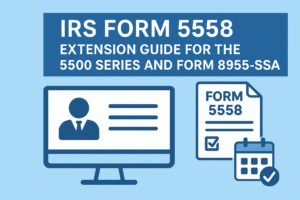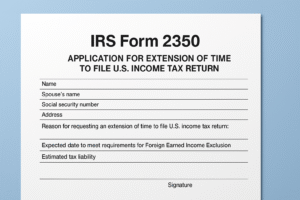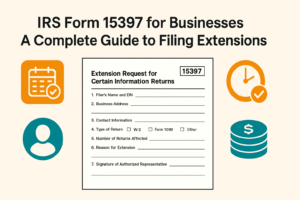IRS Form W-9, officially titled “Request for Taxpayer Identification Number and Certification,” is a document used to provide your Taxpayer Identification Number (TIN) to a person or entity that will report payments made to you to the IRS.
Typically, the W-9 is used when:
- You’re working as a freelancer, contractor, or vendor
- A business needs to issue you a Form 1099-NEC, 1099-MISC, or 1099-INT
- A financial institution needs your information for reporting income like interest or dividends
Important: You do not send the W-9 to the IRS. You provide it only to the requester (the business or individual who will pay you or report your earnings).
Uses of Form W-9
The W-9 form is requested for a variety of IRS information reporting purposes. Common uses include:
1. Independent Contractors & Freelancers
Businesses request W-9s from contractors and freelancers to collect the necessary information (name, TIN, address) for preparing Form 1099-NEC.
Example:
Sarah, a freelance graphic designer, earns $3,000 from a company. They request a W-9 before issuing payment so they can file a 1099-NEC.
2. Vendor Payments
Service providers, consultants, and vendors may be asked to complete a W-9 to be added to a business’s payment system.
3. Bank and Investment Accounts
Banks use the W-9 to obtain information to report interest income (1099-INT) or dividends (1099-DIV) to the IRS.
4. Real Estate Transactions
Settlement agents may ask sellers or landlords to complete a W-9 for tax reporting purposes (such as Form 1099-S).
5. Debt Cancellations and Broker Transactions
Used to report forgiven debts (via 1099-C) or stock sales (via 1099-B), where the identity and TIN of the payee must be reported.
How to Fill Out Form W-9 – Line by Line
Let’s go through the form step by step so you know exactly how to complete each part.
Part I: Identification Details
Line 1 – Name
Enter your full legal name as it appears on your tax return.
Example: If your tax return lists you as “Jennifer L. Watson,” use that full name here.
Line 2 – Business Name / Disregarded Entity Name
If you’re doing business under another name (e.g., an LLC or a sole proprietorship), enter it here.
Example:
Name: Jennifer L. Watson
Business Name: Watson Writing Services LLC
Line 3 – Federal Tax Classification
Check the box that corresponds to how you file taxes:
- Individual / Sole Proprietor
- C Corporation
- S Corporation
- Partnership
- Trust / Estate
- LLC (enter the appropriate classification: “C”, “S”, or “P”)
Note: Single-member LLCs treated as sole proprietors usually check “Individual/Sole Proprietor.”
Line 4 – Exemptions
Only fill this out if:
- You are exempt from backup withholding (e.g., a corporation, certain entities)
- You are subject to FATCA reporting
Most individuals and small businesses leave this blank.
Lines 5 & 6 – Address
Enter the mailing address where you want to receive your 1099 form or any correspondence.
Line 7 – Account Numbers (Optional)
Use this only if the payer requests it for account identification purposes.
Part II: Taxpayer Identification Number (TIN)
Provide one of the following:
- Your SSN if you’re an individual or sole proprietor
- Your EIN if you’re a business or other entity
Example:
- Freelancers usually enter their SSN
- LLCs and corporations usually enter their EIN
Part III: Certification
Sign and date the form. By doing this, you confirm that:
- The TIN you provided is correct
- You are not subject to backup withholding (unless checked)
- You are a U.S. citizen or U.S. person
- The FATCA code, if any, is accurate
EIN vs. TIN – What’s the Difference?
- TIN (Taxpayer Identification Number) is a general term that includes:
- SSN – for individuals
- EIN – for businesses
- ITIN – for resident/nonresident aliens
- EIN (Employer Identification Number) is a type of TIN used by businesses.
Tip: Freelancers can apply for an EIN to avoid using their SSN on every W-9.
Who Must Complete a W-9?
You must complete a W-9 if:
- You are a U.S. person (citizen or resident)
- You are receiving nonemployee income
- You’re paid for services, rent, royalties, or other 1099-reportable activities
- You are a financial account holder, or involved in real estate transactions
Do I Need to File W-9 With the IRS?
No. You do not file W-9 with the IRS.
Instead:
- You fill it out and return it to the person or organization requesting it
- That person uses it to issue your 1099 form at year-end
- You do not need to send a copy to the IRS
Example:
If you’re a contractor hired by a software company, they’ll request a W-9 from you before paying you. You send the form back to them, not the IRS.
Returning Form W-9
How to submit it safely:
- Use secure file transfer or encrypted email
- Never upload it to public sites or send via unsecured messages
Important: Keep a copy for your records. You may need to update it if your name, address, or TIN changes.
What Happens If You Don’t Provide Form W-9?
If you fail to submit a valid W-9:
- The payer must withhold 24% of your payments and send it to the IRS (this is called backup withholding)
- You may experience delayed or canceled payments
- The payer may issue a B Notice from the IRS if your TIN is incorrect or missing
- You risk audit triggers or penalties
Example:
You invoice a client $1,000, but haven’t submitted your W-9. They must withhold $240 and only pay you $760. The $240 goes to the IRS.
What Is Backup Withholding?
Backup withholding is a federal tax withheld from payments made to you when:
- You don’t submit a valid TIN
- Your TIN doesn’t match IRS records
- The IRS has notified the payer to begin withholding
The backup withholding rate is 24%.
When it applies:
- 1099-NEC contractor payments
- 1099-INT bank interest
- 1099-DIV dividends
- 1099-B broker sales
W-9 vs. W-4: What’s the Difference?
Here is the difference between Form W-9 and Form W-4.
| Feature | W-9 | W-4 |
| Used By | Freelancers, vendors | Employees |
| Purpose | Provide TIN for 1099 reporting | Calculate income tax withholding |
| Filed With IRS? | No | No |
| Leads To | Form 1099 | Form W-2 |
Is a W-9 Used for Self-Employed Individuals?
Yes. Self-employed individuals must provide a W-9 when:
- A client plans to pay them $600 or more during the year
- The payer needs their TIN for 1099 reporting
Tip: Always submit a W-9 before starting a contract or project to avoid delays in payment.
What Is FATCA Reporting?
FATCA (Foreign Account Tax Compliance Act) applies to U.S. persons with financial accounts overseas. On Form W-9:
- Most people leave the FATCA section blank
- Only complete it if the form is requested by a foreign financial institution
W-9 vs. 1099: What’s the Difference?
| Form | Who Completes It | Who Files It with IRS | Used For |
| W-9 | You (freelancer/vendor) | Not filed with IRS | Giving your TIN to the requester |
| 1099 | The client or payer | Yes — filed with IRS | Reporting payments made to you |
What Is a W-9 for a Business?
If you’re a business, you’ll fill out Form W-9 when:
- A client or vendor requests it
- You’re providing services subject to 1099 reporting
- You’re opening accounts with a bank or brokerage
Use your business name and EIN when completing the form.
Do I Need to Complete a W-9 If I’m a Freelancer?
Yes. If you earn $600 or more from a client, the client is required to issue a 1099-NEC, and they’ll need your W-9 to do that.
Pro Tip: Applying for an EIN helps protect your SSN and keeps your tax and personal life separate.
Final Tips and Best Practices
- Always fill out your W-9 accurately and completely
- Submit it before you start working or receiving payments
- Use secure channels to return the form
- Apply for an EIN if you want to avoid using your SSN
- Don’t send it to the IRS — send it only to the requester

